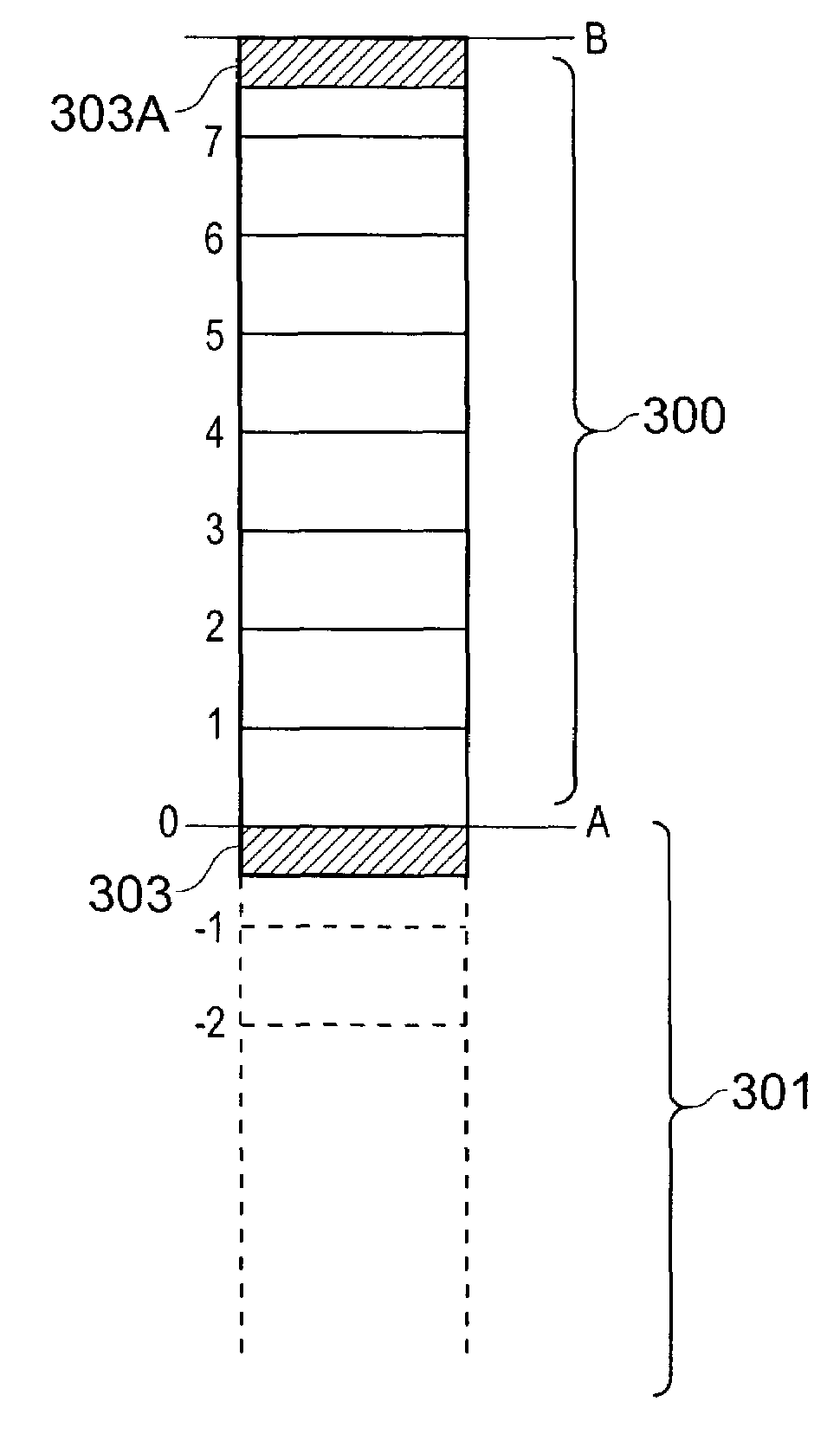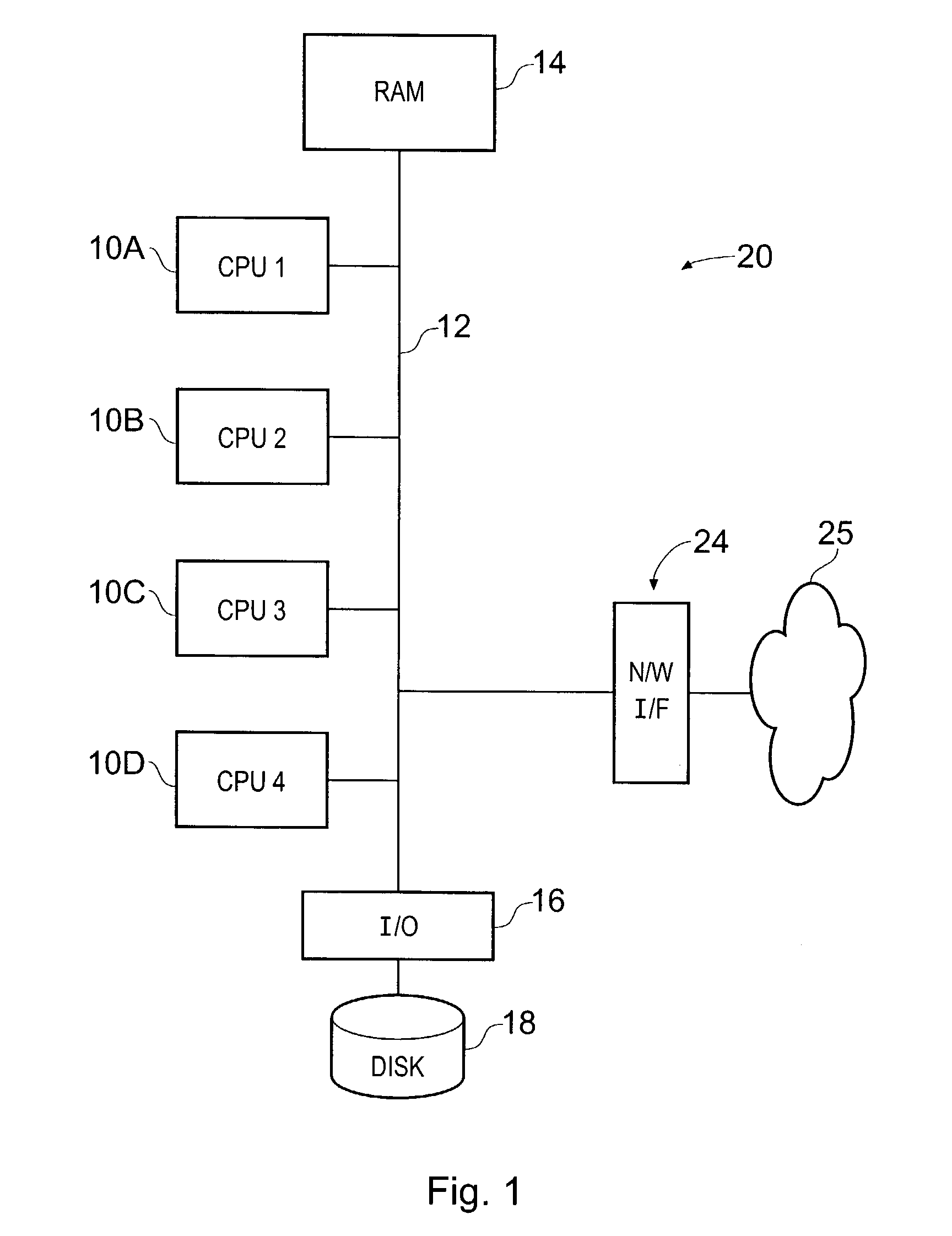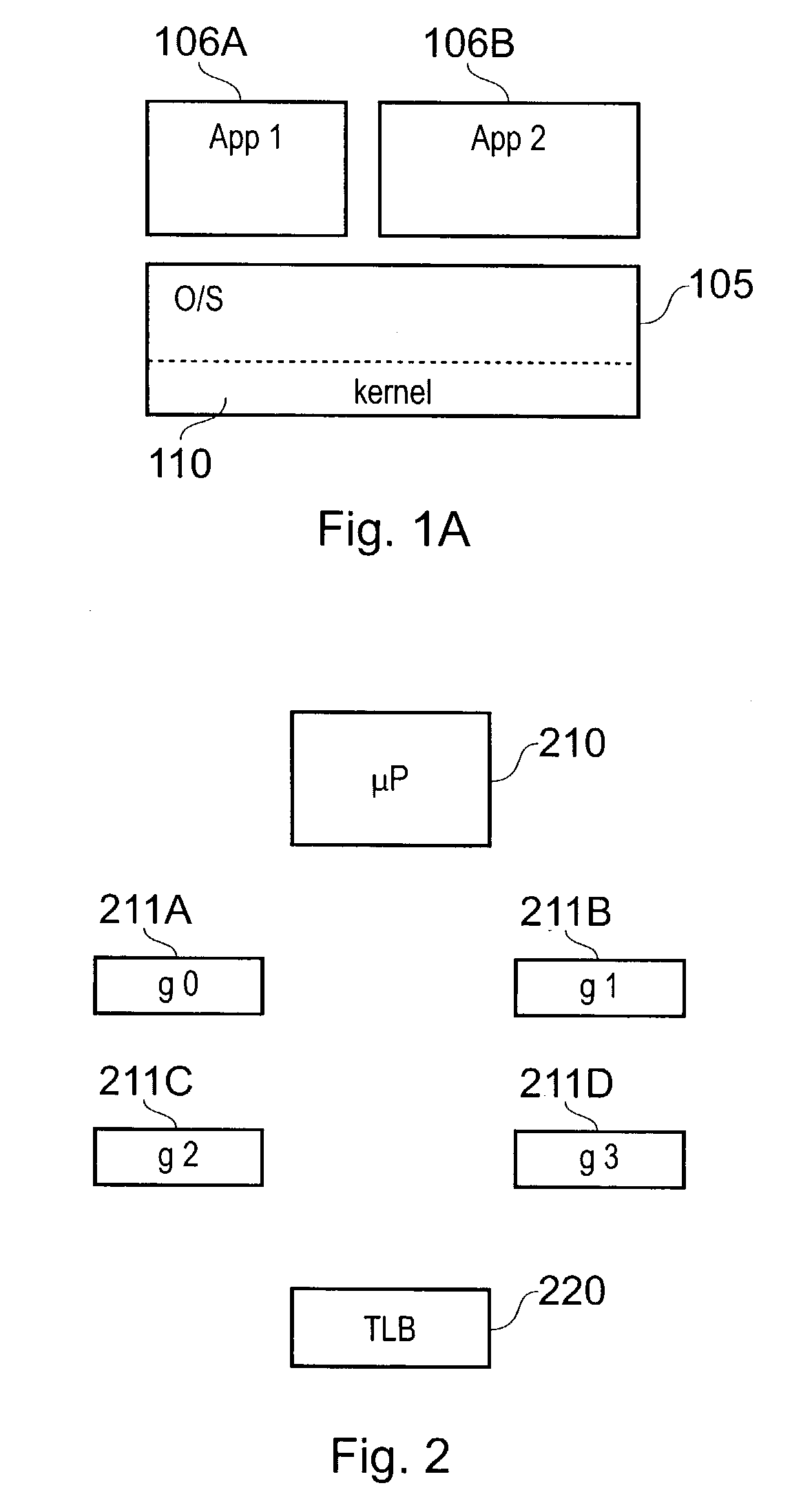Computer system, method, and program product for performing a data access from low-level code
- Summary
- Abstract
- Description
- Claims
- Application Information
AI Technical Summary
Benefits of technology
Problems solved by technology
Method used
Image
Examples
Embodiment Construction
[0042]FIG. 1 is a simplified schematic diagram of a multi-processor system 20 in accordance with one embodiment of the present invention. System 20 includes four CPUs 10A, B, C and D (although of course more or fewer CPUs may be included in other embodiments). Each of these includes a processor (such as a SPARC processor from Sun Microsystems Inc), together with associated registers, cache memory, and other components (not shown in FIG. 1). The CPUs 10 are interconnected by bus 12, which also links them to shared physical memory, RAM 14. This is shared in the sense that generally any CPU can access any particular piece of RAM. The CPUs 10 are also attached via interface 16 to external disk storage 18. This may typically be provided by multiple disk drives, for example as arranged into a redundant array of inexpensive drives (RAID) architecture. Bus 12 is further connected to network interface 24 in order to allow system 20 to communicate via network 25.
[0043]Note that a wide variety...
PUM
 Login to View More
Login to View More Abstract
Description
Claims
Application Information
 Login to View More
Login to View More - R&D
- Intellectual Property
- Life Sciences
- Materials
- Tech Scout
- Unparalleled Data Quality
- Higher Quality Content
- 60% Fewer Hallucinations
Browse by: Latest US Patents, China's latest patents, Technical Efficacy Thesaurus, Application Domain, Technology Topic, Popular Technical Reports.
© 2025 PatSnap. All rights reserved.Legal|Privacy policy|Modern Slavery Act Transparency Statement|Sitemap|About US| Contact US: help@patsnap.com



